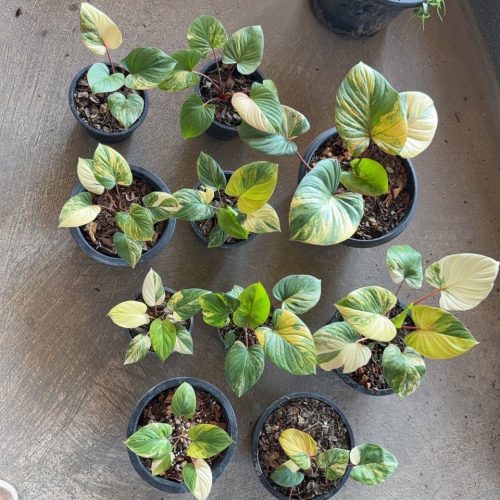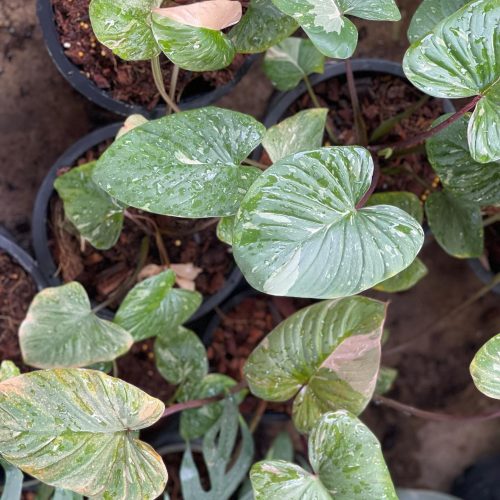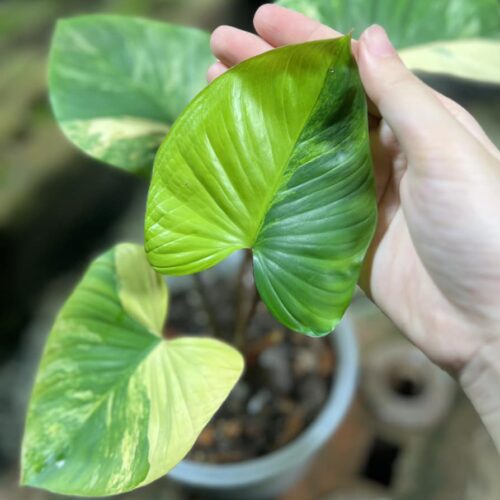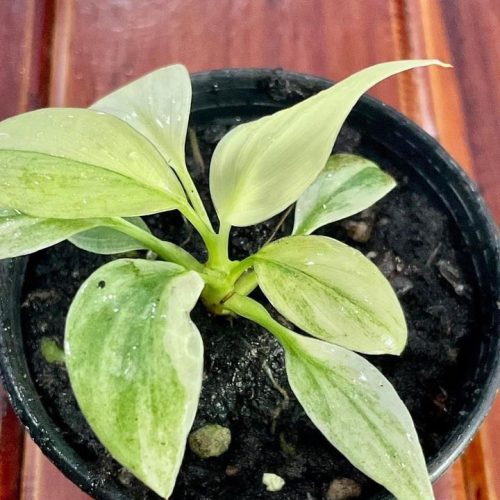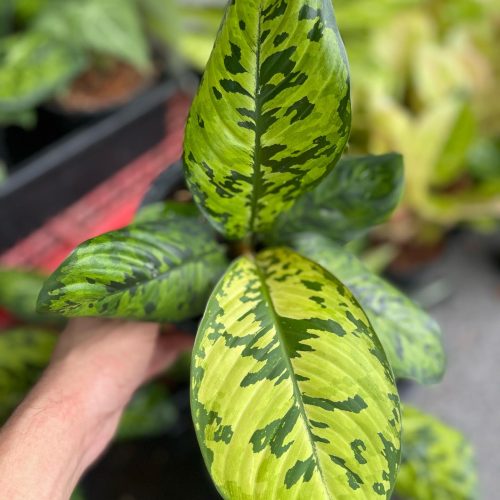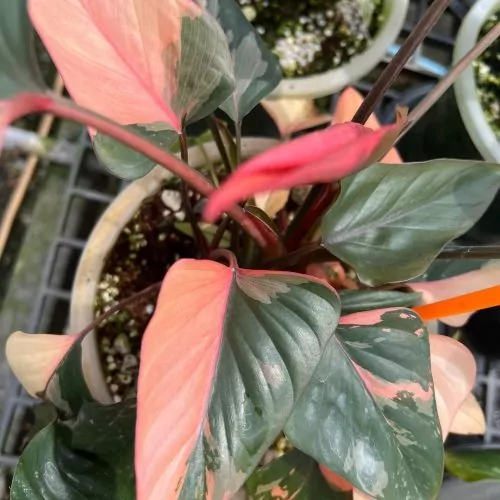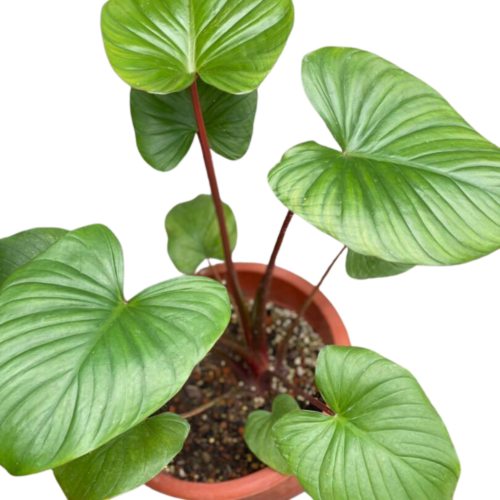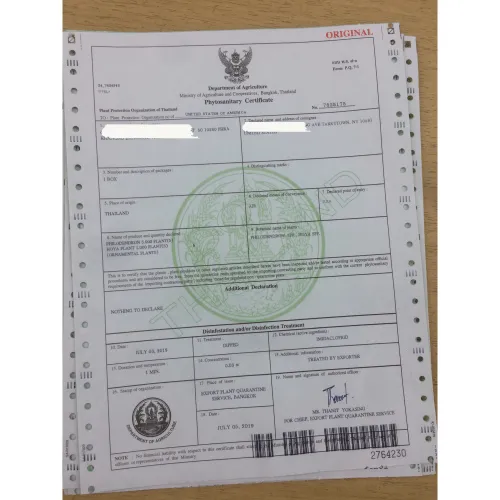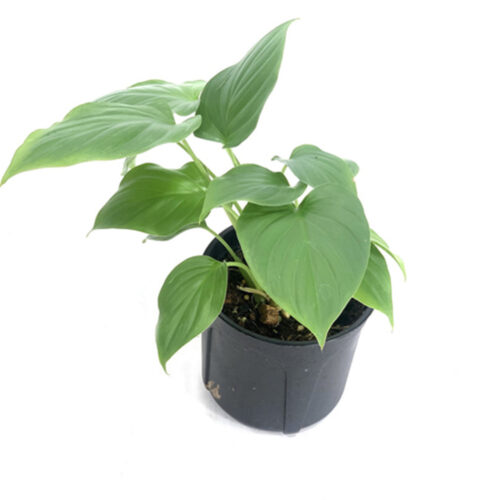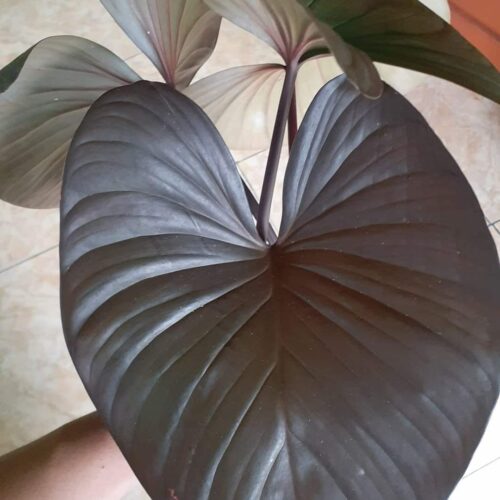The Homalomena Black is a gorgeous tropical plant known for its striking black foliage. This plant is gaining popularity among indoor plant enthusiasts thanks to its dramatic colors and tropical vibes.
While relatively easy to care for, the Homalomena Black does require some specific growing conditions to help it thrive. By following a few simple tips, you’ll have a happy and healthy Homalomena Black gracing your home in no time.
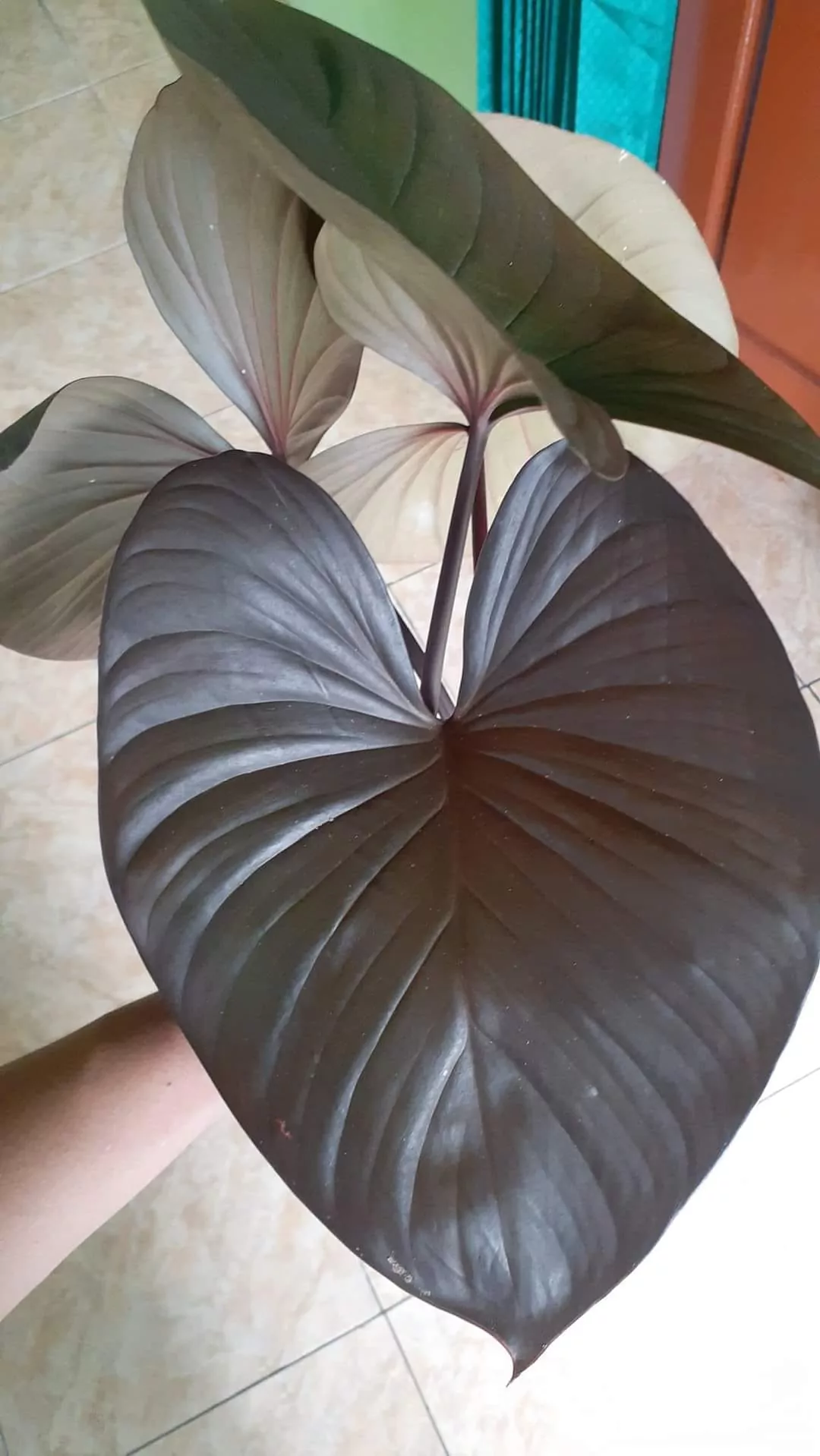
Light Requirements
Natural Light is Best
The Homalomena Black thrives in bright, filtered light. Natural sunlight is best, so be sure to place this plant near a sunny window. East or west-facing windows are ideal, providing gentle morning or afternoon light. Avoid direct southern sun exposure as it may scorch the foliage.
If natural light isn’t possible, supplement with artificial lighting. Fluorescent or LED grow lights work well, providing 10-12 hours of bright light per day. Rotate the plant weekly so all sides get even exposure.
Low Light Causes Problems
Too little light will cause significant issues with Homalomena Blacks. Without enough sun exposure, the foliage loses its deep black color and fades to green. Growth also slows to a crawl in low light.
If you notice your plant’s leaves turning green or development stagnating, it’s likely a light issue. Consider moving it to a sunnier area or adding supplemental lighting to help it regain its dark color and spur new growth.
“To ensure your Homalomena Black receives the best possible light, learn more about optimal light conditions in the detailed guide, Homalomena Lighting Tips: A Balancing Act for Exotic Beauty.”
Soil Needs
Well-Draining Soil is Vital
Well-draining soil is essential for Homalomena Black health. These tropical plants cannot tolerate soggy or waterlogged roots and are prone to root rot if overwatered.
The best potting mix contains ingredients like peat moss, perlite, bark chips or coconut coir. These add air pockets to improve drainage while retaining some moisture. Commercial “indoor plant” or “palm” soil blends also work well.
Always use containers with bottom drainage holes too. This prevents excess moisture buildup. Add an inch or two of gravel at the bottom of the pot to further enhance drainage.
“For more insights on the ideal soil composition for your Homalomena Black, explore the comprehensive information in Caring for an Homalomena – 5 Important Things to Keep in Mind.”
Avoid Regular Potting Mix
Standard multipurpose potting soils usually don’t drain well enough for a Homalomena Black. The dense soil compacts over time and suffocates the roots after watering. As the affected roots die back, the plant declines.
You may need to repot your plant if the current soil retains too much moisture. Carefully remove it from the old mix and repot in a bag of indoor plant soil instead. This gives the roots a fresh start in a suitable growing medium.
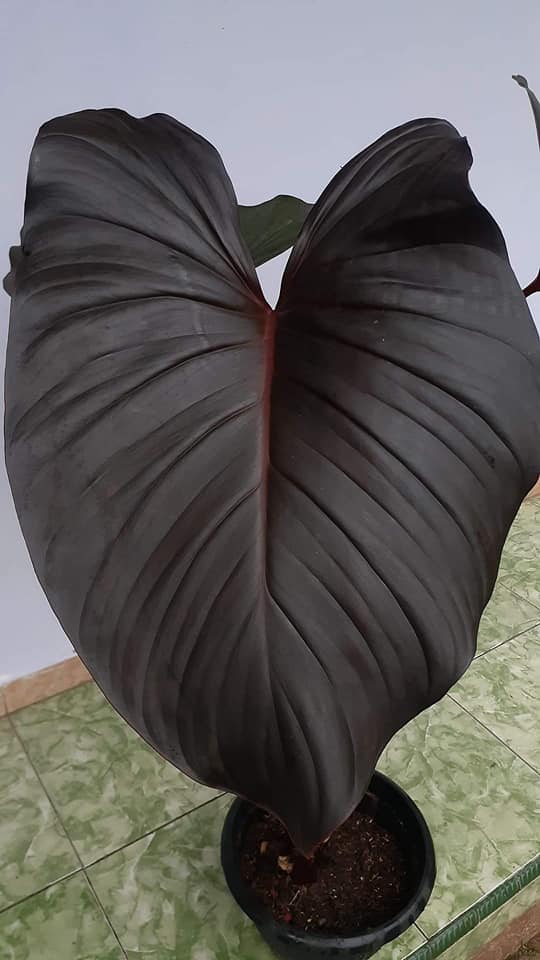
“Discover the elegance of Homalomena Black and bring its beauty into your home today – Shop now!”
Ideal Temperatures
Warmth is Welcome
As a tropical plant, Homalomena Blacks appreciate warm growing conditions between 65-80°F. Temperatures on the higher end of this range are preferred. The foliage may start to yellow if exposed to cooler temps for too long.
During the summer, moving this plant outside is an option as long as nights stay above 60°F. Provide bright shade or indirect sunlight when placing them outdoors. Just beware of direct afternoon sun; an hour or two is fine but extended exposure can burn the leaves.
Beware Chilly Temps
Cooler temperatures often initiate dormancy in Homalomena Blacks. While the plant remains alive, growth halts once temps drop below 60°F consistently. The foliage color also fades without sufficient warmth.
Ideally keep your Homalomena Black in the warmest room possible. Move it away from drafty windows or doors during cold snaps. Consider a space heater or heating pad to maintain optimal temperatures if your home cools substantially in winter.
“Understand the importance of maintaining the right temperature for your Homalomena Black by referencing Homalomena Temperature and Humidity: 101 Guide for detailed temperature guidelines.”
Watering Needs
Allow Soil to Dry Out Slightly
Homalomena Blacks prefer slightly dry soil between waterings. Wait until the top inch or two of soil becomes dry before watering again. The timing depends on factors like light exposure and container size, but is usually every 7-10 days.
To check soil moisture, stick your finger into the pot and feel for moisture. If the top layers are dry but soil lower down remains damp, hold off watering for a few more days. Alternatively, lift up the pot to check its weight—light means it’s dry, heavy means it’s still wet.
Take Care Not to Overwater
While Homalomena Blacks don’t want bone dry soil, take care not to overwater them either. Excess moisture is the fastest way to kill these plants. If water comes out the container’s bottom drainage holes every time you water, it’s an indication you’re overdoing it.
Consider moving your plant to a brighter area or larger pot to help the soil dry out faster between waterings. Take extra caution in winter when plants grow slowly and require less frequent moisture.
“Get in-depth advice on watering your Homalomena Black to maintain its health and vibrancy by checking out Unlocking the Secret to Thriving Homalomena: Watering Tips.”
Fertilizer Needs
Fertilize Monthly During Growth Seasons
From spring through summer, feed your Homalomena Black houseplant fertilizer once every 4-6 weeks. Look for a complete, balanced liquid fertilizer made specifically for indoor plants. Follow package instructions, diluting it to half or quarter strength before applying.
Fertilizer fuels plant processes and healthy growth. It provides key macronutrients plants need like nitrogen, phosphorus and potassium. With regular feeding, you’ll notice lush foliage development and brighter black leaves on your Homalomena.
Avoid Fertilizer in Fall/Winter
As growth naturally slows in fall and winter, hold off fertilizing during the cooler months. Fertilizer when daylight hours decline stresses plants.
Reduce your Homalomena’s fertilizer to only once every 8-12 weeks during this time. And completely cease feeding if you notice very minimal new shoot growth. Resume a monthly feeding routine when spring arrives again.
Where to buy Homalomena Black? Benefits from importing plants from Thailand
- Shipping: Door to door shipping, fast and safe with Dragon Courier
- Biodiversity: Thailand is known for its rich biodiversity, including a wide variety of aroid species. This diversity allows importers to access a broad range of unique and exotic aroid plants.
- Quality and Health of Plants: The suitable climate helps the plants grown here stay healthy and of high quality.
- Cost-Effectiveness: Due to favorable growing conditions and efficient production methods, Thai aroid plants can often be more cost-effective compared to those from other countries.
- Access to Hybrid Varieties: Thai growers are often involved in the development of new hybrid aroid varieties, offering unique plants that may not be available from other sources.
Homalomena species are the most sought after by aroid plant lovers
FAQ
- What is Homalomena Black, and what makes it unique?
- Homalomena Black is a striking tropical houseplant known for its glossy, dark-green to almost black foliage. It stands out due to its distinctive and dramatic appearance.
- How do I care for my Homalomena Black plant?
- To care for your Homalomena Black, provide it with bright, indirect light, keep the soil consistently moist but not waterlogged, maintain a warm and humid environment, and fertilize periodically during the growing season.
- Is Homalomena Black safe for pets?
- While Homalomena Black is generally considered non-toxic to pets, it’s still best to keep it out of reach of curious animals to prevent any potential ingestion or chewing on the leaves.
- How can I propagate my Homalomena Black?
- You can propagate Homalomena Black through division. Carefully separate the plant into smaller sections, each with roots attached, and plant them in separate pots. This is best done during the spring or early summer.
- Why are the leaves of my Homalomena Black turning yellow?
- Yellowing leaves on a Homalomena Black plant can be due to overwatering, inadequate light, or poor drainage. Ensure you are providing the right balance of water and light, and consider repotting if the soil is not draining well.

